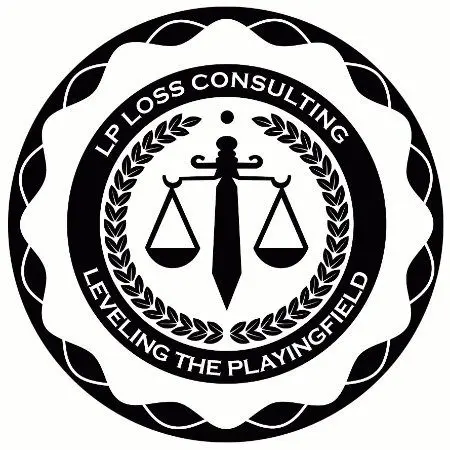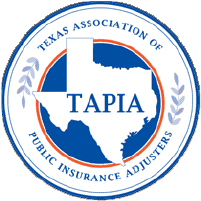Fire damage can have a devastating impact on a property, both structurally and emotionally. The immediate and visible damage caused by flames is just the beginning. Smoke and soot can permeate every surface, causing discoloration, corrosion, and lingering odors. Water damage from firefighting efforts can also compound the destruction, leading to mold growth and further structural issues. The emotional toll of a fire can be equally significant, as the loss of personal belongings and the disruption of daily life can be overwhelming. Understanding the full scope of fire damage is crucial in order to effectively address the aftermath and begin the restoration process.
In addition to the physical damage, fire can also have long-term health effects on those exposed to the smoke and soot. The toxic chemicals released during a fire can linger in the air and on surfaces, posing a risk to respiratory health. It is important to address these potential health hazards as part of the fire damage restoration process. Furthermore, the psychological impact of a fire should not be underestimated. The trauma of experiencing a fire, whether as a homeowner or a tenant, can have lasting effects on mental well-being. Recognizing and addressing these emotional repercussions is an important part of the recovery process.
Key Takeaways
- Fire damage can have a significant impact on a property, including structural damage, smoke and soot damage, and water damage from firefighting efforts.
- After a fire, it is important to prioritize safety, contact emergency services, and begin the process of assessing the damage and contacting insurance companies.
- When working with your insurance company, it is important to document all damage, keep records of communication, and understand your policy coverage and rights as a policyholder.
- Documenting and assessing the damage involves taking inventory of all damaged items, taking photographs, and creating a detailed list of all losses for insurance purposes.
- Hiring a professional fire damage restoration company can help with the cleanup, restoration, and rebuilding process, and ensure that the property is restored to its pre-loss condition.
- Understanding the claims process involves working closely with your insurance company, providing necessary documentation, and being prepared for inspections and negotiations.
- Preventing future fire damage involves implementing safety measures, such as installing smoke detectors, fire extinguishers, and sprinkler systems, as well as conducting regular maintenance and inspections of electrical and heating systems.
Steps to Take Immediately After a Fire
In the immediate aftermath of a fire, it is crucial to prioritize safety and begin the process of recovery. The first step is to ensure that everyone is safe and accounted for. If necessary, seek medical attention for any injuries or smoke inhalation. Once safety has been established, it is important to contact the relevant authorities, such as the fire department and your insurance company. The fire department can provide guidance on when it is safe to re-enter the property, while your insurance company can begin the claims process.
After a fire, it is important to secure the property to prevent further damage. This may involve boarding up windows, tarping the roof, or taking other measures to protect the structure from the elements. It is also important to document the damage by taking photographs and making a detailed inventory of all affected items. This documentation will be crucial when filing an insurance claim and working with a fire damage restoration company. Finally, it is important to resist the urge to start cleaning up on your own. Without the proper equipment and expertise, attempting to clean up after a fire can actually cause further damage. It is best to leave the restoration process to professionals who are trained in fire damage cleanup.
Working with Your Insurance Company
Navigating the insurance claims process after a fire can be complex and overwhelming. It is important to contact your insurance company as soon as possible to begin the claims process. Your insurance company will likely send an adjuster to assess the damage and determine the coverage for your claim. It is important to provide thorough documentation of the damage, including photographs and an inventory of affected items, to support your claim.
When working with your insurance company, it is important to keep detailed records of all communication and documentation related to your claim. This includes keeping track of phone calls, emails, and letters exchanged with your insurance company, as well as maintaining copies of all documentation provided to support your claim. It is also important to be proactive in following up with your insurance company to ensure that your claim is being processed in a timely manner. If you encounter any challenges or disputes with your insurance company, it may be helpful to seek guidance from a public adjuster or legal counsel.
Documenting and Assessing the Damage
| Location | Date | Type of Damage | Description |
|---|---|---|---|
| City A | 2022-05-15 | Structural | Collapsed buildings |
| City B | 2022-06-20 | Environmental | Oil spill in the river |
| City C | 2022-07-10 | Infrastructure | Roads and bridges damage |
Documenting and assessing the damage after a fire is a critical step in the recovery process. It is important to thoroughly document all visible damage, including structural damage, smoke and soot residue, water damage, and damage to personal belongings. Taking photographs and making a detailed inventory of all affected items can help support your insurance claim and ensure that nothing is overlooked during the restoration process.
In addition to documenting visible damage, it is also important to assess any potential health hazards that may be present as a result of the fire. This may include testing for air quality, checking for mold growth, and addressing any lingering odors caused by smoke and soot. It is important to work with professionals who are trained in fire damage restoration to ensure that all aspects of the damage are properly assessed and addressed.
Hiring a Professional Fire Damage Restoration Company
After a fire, it is important to hire a professional fire damage restoration company to handle the cleanup and restoration process. Attempting to clean up after a fire on your own can be dangerous and may cause further damage to your property. A professional fire damage restoration company will have the expertise, equipment, and resources necessary to properly assess and address all aspects of the damage.
When hiring a fire damage restoration company, it is important to choose a reputable and experienced provider. Look for a company that is certified by industry organizations such as the Institute of Inspection Cleaning and Restoration Certification (IICRC) and has experience in handling fire damage restoration projects. It is also important to ensure that the company has proper insurance and licensing, as well as a track record of providing high-quality service.
Understanding the Claims Process
The claims process after a fire can be complex and time-consuming. It is important to have a clear understanding of how the claims process works in order to navigate it effectively. When filing an insurance claim for fire damage, it is important to provide thorough documentation of the damage, including photographs, an inventory of affected items, and any other relevant documentation requested by your insurance company.
Once your claim has been filed, it is important to stay proactive in following up with your insurance company to ensure that your claim is being processed in a timely manner. If you encounter any challenges or disputes with your insurance company, it may be helpful to seek guidance from a public adjuster or legal counsel. Understanding your rights and responsibilities throughout the claims process can help ensure that you receive fair compensation for your fire damage claim.
Preventing Future Fire Damage
After experiencing a fire, it is natural to be concerned about preventing future fire damage. There are several steps that homeowners and property managers can take to reduce the risk of fire in the future. This may include installing smoke detectors and fire extinguishers, maintaining electrical systems and appliances, and implementing fire safety protocols for residents or tenants.
It is also important to have an emergency plan in place in case of a future fire. This may include establishing evacuation routes, designating meeting points, and ensuring that everyone in the household or building knows how to respond in the event of a fire. By taking proactive measures to prevent future fire damage, homeowners and property managers can help protect their property and ensure the safety of those who live or work there.
In conclusion, fire damage can have a significant impact on both property and personal well-being. Understanding the full scope of fire damage, taking immediate steps after a fire, working with your insurance company, documenting and assessing the damage, hiring a professional fire damage restoration company, understanding the claims process, and preventing future fire damage are all crucial aspects of navigating the aftermath of a fire. By taking proactive measures and seeking professional assistance when needed, homeowners and property managers can effectively address the impact of fire damage and begin the process of recovery and restoration.
If you’re dealing with fire damage to your property, it’s crucial to seek the expertise of a skilled fire damage adjuster. At LP Loss Consulting, their team of public adjusters in Austin, Texas, is well-equipped to handle a wide range of property damage claims, including fire damage. In a related article on their website, they discuss the importance of hiring a storm damage public adjuster to navigate the complexities of storm-related property damage claims. You can read more about it here.
FAQs
What is a fire damage adjuster?
A fire damage adjuster is a professional who assesses and evaluates the damage caused by a fire to a property. They work on behalf of insurance companies to determine the extent of the damage and the amount of compensation that the policyholder is entitled to.
What does a fire damage adjuster do?
A fire damage adjuster inspects the property, documents the damage, and assesses the cost of repairs or replacement. They also review the insurance policy to determine the coverage and negotiate with the policyholder to reach a fair settlement.
How do I become a fire damage adjuster?
To become a fire damage adjuster, one typically needs a high school diploma or equivalent, and on-the-job training or a certification in insurance adjusting. Some employers may also require a bachelor’s degree in a related field, such as business or finance.
What skills are required to be a fire damage adjuster?
Fire damage adjusters need strong analytical and problem-solving skills, attention to detail, and the ability to communicate effectively with policyholders, contractors, and other professionals involved in the claims process. They also need a good understanding of insurance policies and regulations.
What should I do if I need to file a fire damage insurance claim?
If you need to file a fire damage insurance claim, you should contact your insurance company as soon as possible to report the damage. They will likely send a fire damage adjuster to assess the damage and guide you through the claims process. It’s important to document the damage and keep records of any expenses related to the fire.





